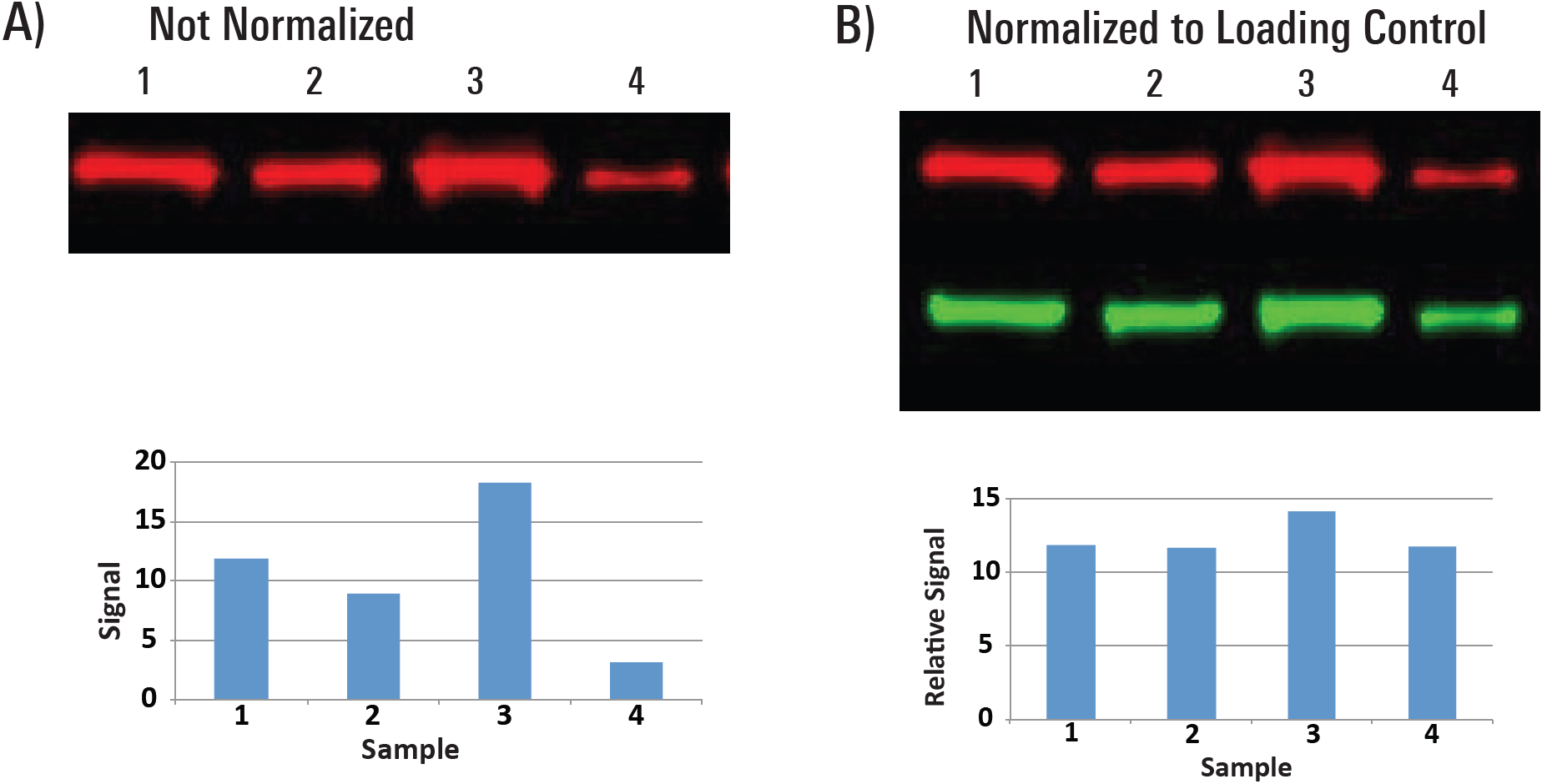Normalization is important to Western blot success for many reasons. It corrects for some of the unavoidable variations that are inherent in any experiment. For example, some Western blot technique variability can be caused by inconsistent loading across the gel and transfer variation. Normalization consequently provides a baseline or scale to compare changes in protein expression.
It is important to know whether any changes in the target’s band intensity are due to intrinsic variability or actual biological change. This can be determined by normalizing your data with an internal loading control (ILC).
Internal loading controls are endogenous proteins that are used to indicate sample concentration. When choosing the right one to use, there are several requirements that are fundamental to the design of an accurate Western blot.

Requirements
- Detected within the same linear range as the target. Signal intensity of the internal control should accurately reflect sample concentration and abundance of loading control over a wide range.
- Unaffected by experimental conditions Your experimental treatments should not affect the expression of your internal loading control. For example, expression of some housekeeping proteins may vary in response to experimental conditions.
- Corrects for variation at all stages of immunoblotting. Your internal control should correct for variation that occurs throughout the Western blot process, including gel loading and transfer.
- Compatible with immunodetection. The strategy you choose shouldn’t interfere with effective down¬stream detection of your target proteins.
There are many types of ILCs, such as housekeeping proteins (HKP), signaling proteins, and total protein stains. Understanding these requirements for an internal loading control will help you choose the right one for your experimental needs and correct for variability.
Want to know more about normalization and journal requirements? Sign up to watch the Meeting Western Blot Publication and Grant Funding Requirements learning path in the Lambda U® educational portal for normalization strategies, helpful tips on publishing Western blot data, and more.
Bővebb Információk: https://www.licor.com/bio/blog/normalization-and-internal-loading-control-requirements
